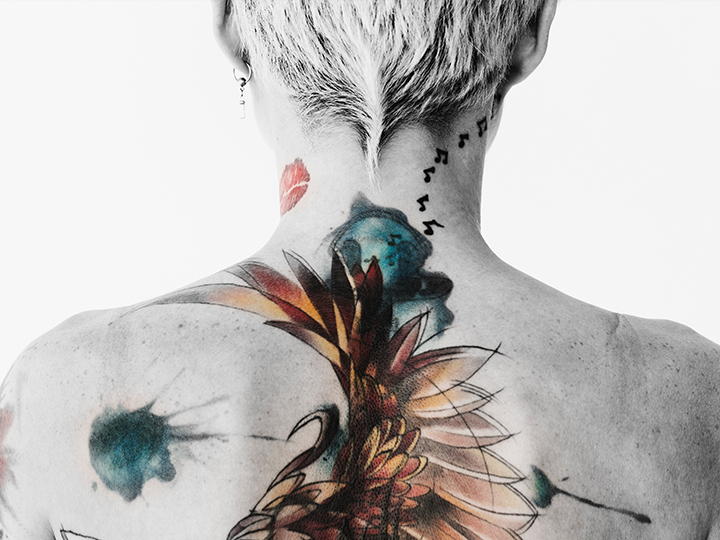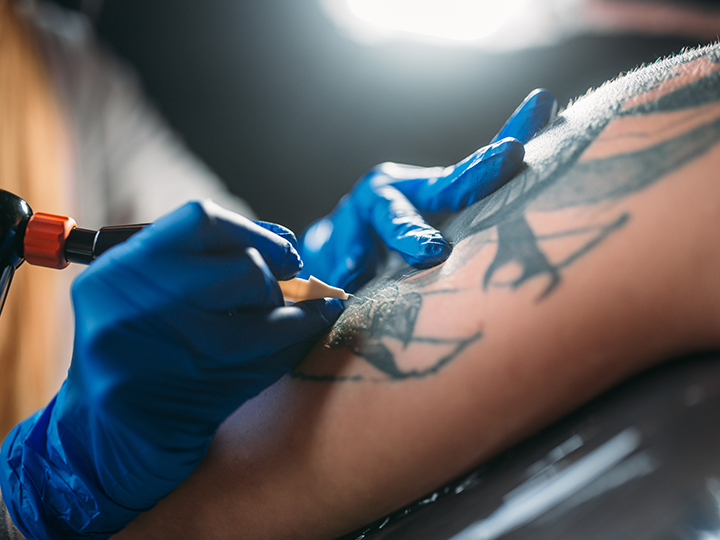
How did the tattoo culture come about?
Tattoos have a rich and varied history that spans thousands of years and numerous cultures around the world.
Ancient Origins: The earliest evidence of tattoos dates back to the Ice Age, where tattoos were discovered on the mummies of the Otzi people who lived around 3300 BCE. These tattoos were likely used for medicinal or spiritual purposes.
Polynesian Culture: Tattoos were also an important part of Polynesian culture, where they were used to mark significant events and transitions in a person's life, as well as to denote status and rank within society.
Japanese Tattoos: In Japan, tattoos were traditionally associated with the criminal underworld, where they were used to mark gang members and outlaws. However, they have since evolved into a highly respected art form in Japan, where traditional techniques such as tebori and irezumi are still practiced today.
Western Adoption: Tattoos began to gain popularity in the West in the late 19th and early 20th centuries, largely due to the influence of Western sailors who brought back tattoos from their travels in the Pacific.
Modern Evolution: Today, tattoos have become a widespread form of self-expression and art, with millions of people around the world choosing to adorn their bodies with intricate designs and meaningful symbols.
Despite its long and diverse history, the appeal of tattoos continues to endure, with people from all walks of life using this timeless art form to express their individuality and creativity.
What are the factors that affect the pain when getting a tattoo?
Intensity: The pain level associated with getting a tattoo varies depending on factors such as placement, size, and the person's pain tolerance.
Areas of the Body: Different areas of the body can cause different levels of discomfort, with sensitive areas like the ribs, spine, and feet being the most painful.
Pain Threshold: Individual pain thresholds can vary greatly, making it difficult to predict the exact level of pain someone may experience during a tattoo.
Needles: The type of needle used can also impact the level of pain felt during a tattoo, with smaller, finer needles causing less discomfort than thicker, more heavily tattooing needles.
Ink: The amount of ink used in a tattoo can also play a role in the level of pain felt, as larger tattoos that require more ink may cause more discomfort.
Technique: The style and technique of the tattoo artist can also impact the level of pain, with more aggressive techniques causing more discomfort than slower, gentler approaches.
Numbness: Some people opt to use numbing creams or take pain-relieving medication to help minimize the discomfort associated with getting a tattoo.
Personal Experience: Ultimately, the level of pain experienced during a tattoo is subjective and will depend on a person's personal experience, pain tolerance, and overall health.

What are the areas that hurt the most when getting a tattoo?
Getting a tattoo can be a painful experience, and the level of discomfort experienced will vary depending on factors such as placement, size, and the person's individual pain tolerance. However, there are certain areas of the body that are generally considered to be more painful than others.
Ribs: The ribcage is considered one of the most painful areas to get tattooed due to the lack of fatty tissue and muscle to cushion the impact of the needles. The skin in this area is also very thin, which can make the experience more intense.
Spine: The spine is another sensitive area that can cause a significant amount of pain during a tattoo. The bones in this area make it difficult for the tattoo artist to work, and the skin is often pulled tight, making it more sensitive to the needle.
Feet: The soles of the feet are another area that can be particularly painful due to the high concentration of nerve endings and the thin skin. This can make the experience of getting a tattoo on the feet very intense, and many people find it to be one of the most painful areas of the body.
Head: The head is another area that can be very painful due to the lack of fat and muscle, as well as the sensitive skin. Tattoos on the head can also be particularly challenging due to the need for the tattoo artist to hold the skin taut, which can make it more difficult to work and increase the level of discomfort experienced.
Inner Arms: The inner arms can also be painful due to the lack of padding in this area and the close proximity of the bones to the surface of the skin. This can make the experience of getting a tattoo in this area more intense, particularly for those with a low pain tolerance.
Ultimately, the level of pain experienced during a tattoo will depend on the individual's personal pain tolerance and the specific details of the tattoo being done. Some people may find certain areas of the body to be more painful than others, while others may have a high tolerance for pain and find the experience to be relatively pain-free.